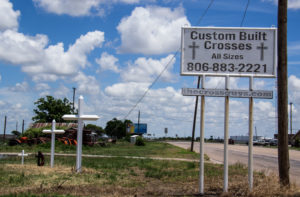by aramatzne@gmail.com | 26 Sep 2017 | Roads Taken
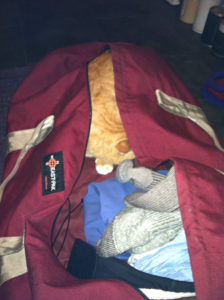
An ounce of prevention, Big Cat requests that I stay.
The trail was on the east-facing slope, in mid-afternoon, it was entirely shaded. Autumn settled in last week making the shady slope cool and damp but we were in pursuit of a sunny nap clearing.
The trail came to an extravagant but rather permeable fence, then turned and followed the fenceline. One large, mangled, weathered, and high-off-the-ground sign stated, “No trespassing. No hunting. No…”
We followed the trail until it veered away from the fence. Then we crossed the fence, climbed the hill, and found the most lovely picnic spot, complete with a stone fireplace and a picnic table. We also found a perfect, sunny, pine needle-laden opening for a nap.
Enjoying the sun and watching as dozens of turkey vultures wobbled their way south overhead, we heard an engine, grinding up the hill.
“I suppose you know you’re on private property.”
“Yes, we saw the sign.” I mean, really what else could we say? The fence should have been enough.
After a pleasant exchange about where to find an equally beautiful and sunny nap spot on public land, we bid adieu and made our way back to the trail.
It was only later that I coined a new word: tresnapping. We meant no harm, we caused no damage, we merely wanted to nap in the sun, trespassing was necessary to fulfill our goal. Tresnapping. It’s perfect. You read it here first.
I took this photo of Big Cat napping in my duffel bag. I was packing for a work trip. He was tresnapping in silent protest.
Like this:
Like Loading...
by aramatzne@gmail.com | 20 Sep 2017 | Roads Taken
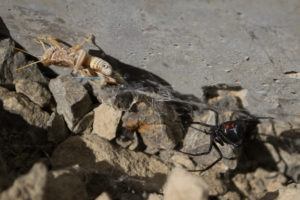
Life and death. Eeny, meeny, miny, mo, catch a grasshopper by the toe.
There are good days. There are bad days.
Some days you’re a black widow spider on top of your web. The world is at your feet, and it fears you.
Other days, you’re the grasshopper, caught by the most delicate thread and just by the toe. Yet, each time you hop away, you land in exactly the same place.
I took this photo on a day when I was perceived as the spider – though I felt like the grasshopper. Gratefully, those days are past.
Like this:
Like Loading...
by aramatzne@gmail.com | 19 Sep 2017 | Roads Taken
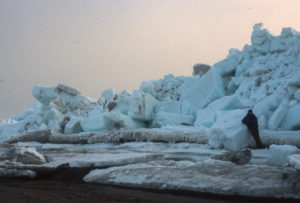
Things that happen while you sleep.
Unless the weather was completely unbearable I left the tent door partially unzipped so I could sit up and look out. My theory was if a polar bear was calling, I wanted to see it before it pounced. Of course, zipped into my sleeping bag, I looked like a puffy seal and an easy snack for a bear (granted in the photo above, out of my sleeping bag, I look like a puffy upright seal).
Sometimes while I slept people would stop on the island. They would pull up their boat, walk to the tent, see me buried in my bag, and leave again. Occasionally, I awoke to a plate of donuts or fresh fish left by unknown visitors.
When you live alone in a tent on an Arctic Ocean island you might expect heightened senses and light sleep. Hearing a boat approaching the island or a bear approaching your tent would be a good survival skill.
I took this photo after a good night’s sleep. I crawled out of the tent to find that the Arctic Ocean had moved thousands of tons of ice into this massive wall less than a hundred yards from where I slept.
It’s amazing I survived at all.
[This is a scan from the original slide. From film. Some of you may remember that stuff.]
Like this:
Like Loading...
by aramatzne@gmail.com | 16 Sep 2017 | Roads Taken
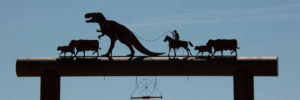
Honey! Look what I found. Can I keep it?
Long ago and far away in a land often forgotten, a biologist spent long days hiking. Uphill. Downhill. Cross slope. Through Ponderosa pines, over talus fields. Through native grasses, and evil invasive cheatgrass. Many miles were covered daily.
Every day was an adventure. Rattlesnakes, elk, buffalo, and pronghorn were regular companions, coyotes, badgers, bears, and bighorn sheep fond acquaintances. Mountain goats were a special treat.
Finding elk and mule deer antlers was common. Occasionally, a dead animal was found. Sometimes the animal was partially covered, cached by a bear or a mountain lion.
One day the biologist stumbled upon a skull. It was intact, and it was beautiful. The bone was bleached white, the teeth all in place, and the horns undamaged. It was a bighorn sheep skull. A ram. The full curl of the horns had heft and weight.
As biologists are wont to do, she collected the skull. Pulling the horns off the bony sheath allowed the skull to fit into her backpack. The horns though had to be carried by hand; they weighed a ton.
The biologist knew that possessing a bighorn ram skull was against the law. Undeterred, she packed the skull uphill, across the flat, down the slope, up the draw, finally arriving at her truck. A U.S. government issue pickup.
The skull, now unpacked from her backpack, rested neatly in the extended cab, under a blanket, where it spent the night. Ending her work day an hour after everyone else had its advantages.
Starting her work day an hour before everyone else also had its advantages. In the morning, the biologist parked her car next to the government truck and transferred the skull and the horns.
A long day of hiking passed slowly. The anticipation of setting the skull in its new home was a bit overwhelming. Finally, the work day ended, and the biologist drove home.
“Hi, honey! You’ll never guess what I found?”
“Hints? Wait. Where is it?”
“In the trunk of the car.”
“Take it back.”
“But…”
“No.”
“But…”
“Take it back.”
“You don’t know what it is.”
“If it’s still in the trunk of your car, I know what it is. Without a plug, you’ll be arrested.”
“Who’s going to know?”
“I will. Take it back. ”
The next morning, the biologist, drove to work and, arriving an hour ahead of everyone else, moved the pieces, with great reluctance. She reassembled the skull, the jaw, and the beautiful full curl horns on a desk at the US Department of Interior Fish and Wildlife Service, National Wildlife Refuge headquarters.
And acted as if nothing had ever happened.
It was just a skull. Imagine if I had roped a T. rex on the range and taken it home.
It followed me home. Can I keep it?
Like this:
Like Loading...






